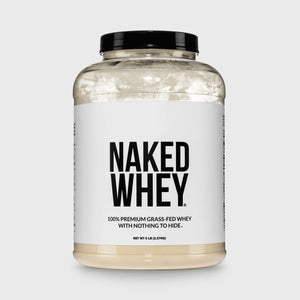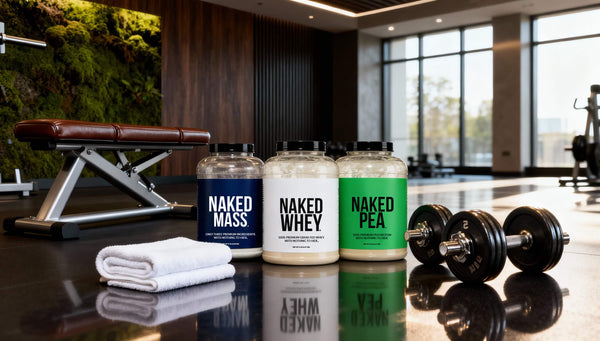Should you do cardio before or after lifting weights?
It’s a debate that’s been waged in gyms, online forums, and locker rooms for decades. Some swear by warming up with a run. Others are terrified that a minute on the treadmill at the wrong time will make their gains disappear.
The truth is, both sides have a point. But the right approach depends almost entirely on your goals.
This article dives into what the science says, clears up the confusion (and the bro-science), and offers practical advice depending on the best approach, whether you’re training for strength, fat loss, endurance, or overall health.
The Cardio Timing Debate: Why Timing Matters

If you’re doing both resistance training and cardio in the same workout, the order can absolutely impact your performance and results.
This is where a lot of gym-goers go wrong. Sequencing cardio and lifting the wrong way can lead to struggles and suboptimal results.
Before we dig into the mechanisms and research, let’s clarify something: there is no single “best” order for everyone. Instead, the impact of cardio timing depends on your primary training goal.
You may be looking to grow muscle and increase strength, in which case, you’ll want to maintain full energy stores for your lifting.
Yet others go to the gym to burn fat, or boost cardiovascular endurance. In this case, aerobic activity may be the priority, more than hitting PBs on the bench.
So, before you go on, understand there’s no one best answer, and what works for you may not work as well for someone else.
Why You Should Do Cardio Before Weights

Doing cardio before weights can have a number of advantages.
First, light cardio can be used as a warm-up, to get the blood flowing and loosen your joints and muscles prior to lifting.
This may help prevent injuries from heavy lifts, and potentially increase performance – as long as you don’t go too hard on the cardio.
There have also been some findings that show cardio (in this case, leg cycling) can increase muscular adaptations done later in other areas of the body (the arm muscles in this study).
Otherwise, if cardio is your priority – say, if you’re training for fat loss, or boosting endurance is your main goal – it may be better to do cardio first, while you have the most energy.
A 2014 study suggested that endurance performance is worse when preceded by strength training. So if you’re training for endurance (training for a marathon or endurance-heavy sport, for example), you may want to keep your peak performance window for cardio, before mixing in resistance training.
Why You Should Do Cardio After Weights
For most people, lifting weights first is the better option – especially if your goals are building muscle, getting stronger, or improving your body composition.
When you lift first, you can go all-in with your strength work. You’re not already fatigued, so you’ll get more out of every set and rep.
Also, doing cardio after weights might actually help you burn more fat. Lifting lowers your glycogen levels, so when you hop on the bike or treadmill afterward, your body may rely more on fat for fuel (which appears to be supported in some studies).
The research is somewhat lacking to support the idea that strength and muscle growth will be diminished if you do cardio before lifting weights.
One 2003 study found that aerobic training prior to strength training reduced the amount of reps the subjects were able to perform for up to 8 hours. A 2009 study on world-class kayakers found greater muscle strength and power gains when doing resistance training prior to cardio (or leaving at least a 6-hour gap between cardio and lifting).
However, other studies have found no negative effects on hypertrophy when doing aerobic activity first, then resistance training.
Regardless, cardio after lifting makes sense if you want to keep workouts efficient (and strength training is your priority).
You get the strength work done first, and use cardio as a finisher, either to burn extra calories or to improve your conditioning.

Does the Type of Cardio Matter?
Not all cardio has the same effect, so it can certainly make a difference depending on what type of cardio you do.
HIIT (high-intensity interval training) is short and intense – think sprints, bike intervals, or sled pushes.
HIIT has been shown to complement strength training without interfering too much. Experts like Dr. Andy Galpin and Dr. Andrew Huberman often recommend doing HIIT after lifting, about 2-3 times a week.
LISS (low-intensity steady-state cardio), like walking, easy cycling, or light jogging, is easier to recover from, and can be good as a warm-up (though doing this for an extended period of time may wear you out and affect performance when it comes to your lifts).
As a general recommendation, it’s best to save the bulk of your energy expenditure for your highest priority area. If the energy output from your cardio is low enough, it likely doesn’t make a difference when you do it.
Should You Separate Cardio and Weight Days?

Some believe it’s just easier to stick to dedicated days for cardio and weights.
Ultimately, that choice is up to you. But research shows that there are little downsides to mixing both cardio and weight training together in the same workout.
A 2021 research article describes how the body is able to efficiently shift between utilizing different types of muscle fibers – such as those you’d utilize in an explosive deadlift movement vs a long, steady jog.
A 2021 meta-analysis found that doing aerobic training and strength training in the same workout didn’t have any difference in hypertrophy and maximal strength development; but explosive strength gains may be lower if you mix in cardio in the same session.
Practical Recommendations Based on Training Goals
The key takeaway should be that there is no major difference in whether you do cardio before lifting, cardio after lifting, or separate the two completely.
But consider that the research isn’t complete – and it stands to reason that you should save most of your energy for the most important exercises (for you).
So with that in mind, here’s how you could structure your cardio around your lifting based on specific outcomes:
-
For Muscle Growth and Strength: Lift first, when your neuromuscular system is fresh (or after a small, light warm-up). Feel free to mix in HIIT training for cardio after your main lifts.
-
For Explosive Power: Lift first, or separate cardio into separate training sessions (at least 3 hours apart).
-
For Fat Loss and General Fitness: Lift first, to get increased energy expenditure and calorie burn.
-
For Endurance or Sport-Specific Conditioning: Go with cardio first, supplementing with strength training afterwards.

Final Thoughts: Find What Works For You
There’s no one-size-fits-all solution. Your training should reflect your goals, recovery capacity, and schedule.
If you take one thing away from this article, it should be that your gains aren’t going to disappear in a flash just because you structure your cardio and lifting the wrong way.
There’s no scientific consensus that one way is clearly better than the other, and unless you’re training for the upper echelon of athletic performance, you’ll be fine building your workout however you respond best, and whichever way fits your schedule, your priorities, and (most importantly) the enjoyment you get out of working out.
A “bad” workout is better than no workout. So get out there and do it.













